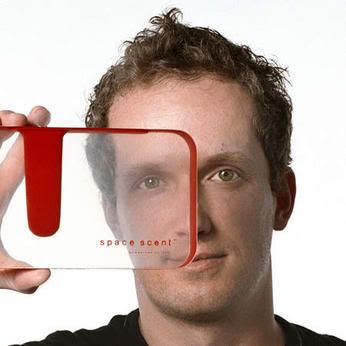SWAP n GO GREENThis interested me the most out of all the designs in the Australian International Design Awards exhibition @ the PowerHouse because it is a very common product used daily worldwide. My initial attraction was the appropriation of colour, where a natural inviting green has flourished from an aged steel cylinder. This newly converted LPG gas cylinder has given life to a 100% recyclable light thermoplastic alternative. I believe this revolutionize the whole LPG storage industry.
http://i92.photobucket.com/albums/l3/jazo0/swapngo.jpgDroogs ChestDroog’s Chest of Drawers designed by Tejo Remy ranks above all else in the Inspired! exhibition because highlights the doubted strength of function and innovation alongside creativity. This iconic object of post modernism communicates familiar and pre-loved objects into an appropriation of new life and being reborn. These once valued drawers are collectively familiarized into a beautifully working eyesore. I really like this design as it has a depth to it. It draws attention to the growing consumerist addiction from past to present.
http://i92.photobucket.com/albums/l3/jazo0/droogschest.jpgLifeArt CoffinsI suggest this to be the best design among lot at the EatGreenDesign exhibition for various reasons. Out of all the objects it attracted my instant attention. This ordinary coffin has been transformed into a symbol of what it represents- environmentally friendly; made from specifically engineered cardboard called ‘Enviroboard,’composed of 97% recycled material. This coffin , although obtaining the same conventions of a coffin, is completely appropriated from a lifeless last memory to a dynamic new life by the vibrant design printed on the entire exterior.
http://i92.photobucket.com/albums/l3/jazo0/coffinart.jpgWOOD09I believe this to be my personal best out of the lot in the Workshopped exhibition @ Chifley Plaza because of the juxtaposition of the materials. Automatically the piece of wood which provides the support frame for the bike becomes the focal point where the structure of the material may not be entirely appropriate but still manipulated. Seeing the wood next to the metal celebrates the integration and the relationship between the natural and man-made.
http://i92.photobucket.com/albums/l3/jazo0/wood09.jpgu-TrashI admire this design the most in the Form Functions Fabulous exhibiton @FBE because of its simplicity. Personally, the notion of keeping things simple, especially in design, is extremely hard as one is constantly trying to add on features and perfect their design. This smooth cylindrical trash can also provokes a sense of adventure and deep sea imagination, suggesting it is a portal to a new world.
http://i92.photobucket.com/albums/l3/jazo0/utrash.jpgThe Basket of KnowledgeThe first thing that captured my attention when I entered the exhibition was this light. This massive tear drop shaped that hung from the ceiling and sunk in a beautiful pattern of projecting lights shining out the aluminium system. Highly ranked above all else @ the Sustain Me exhibition, this ‘Basket of Knowledge’ manipulated my emotion and attraction by its grand size intricate stenciling, subconsciously commanding me to walk to it.
http://i92.photobucket.com/albums/l3/jazo0/basketofknowledge.jpg


















